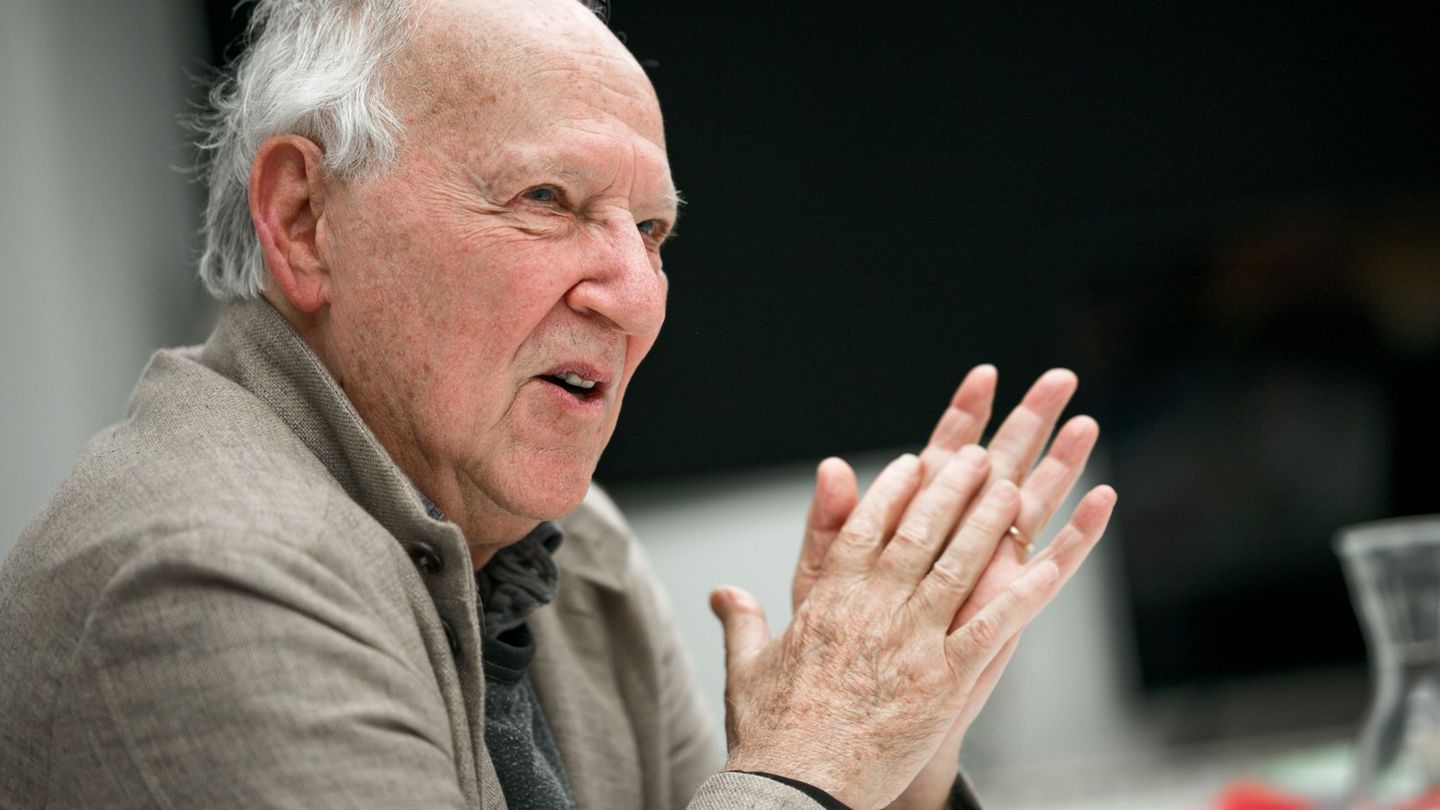Cohn and Duprat wrote 40 stories, but selected and filmed 16. Some vignettes become a self -criticism, others point to reflection and then are those that touch the fiber of emotion, but always with the ironic humor characteristic of this trio. After all, The Argentine is one of the few “species” that he is able to laugh at himself.
Guillermo Francella – Homo Argentum
Guillermo Francella stars in 16 different Argentines, but similar to each other.
Pampa Films
Gastón Duprat and Mariano Cohn: the directors behind the 16 Francellas
In the days before the premiere, the emotion of the directors is mixed with the nerves. “It is a very big bet because it is intended for the public to return to theaters to watch an Argentine film,” explains Mariano Cohn in dialogue with scopewho also recognizes the risks of the project: For the first time they premiere a fragmented film in 16 stories.
Although they come from a series, cinema is another world and they know it well. The vignettes were chosen according to their theme and rhythm. In this case, the order does alter the product. “It was a super hard work, there was many evidence of how to locate them, since it marks the pulse of the film because it is like an electrocardiogram”Cohn details. “Homo Argentum” accommodates the needs of the audience: “Now there is a type of consumption We are accustomed tothat is more instantaneous, which are short stories, than Maybe the film satisfies that consumption. ”
Homo Argentum (1)

Gatón Duprat and Mariano Cohn: the Argentines behind Guillermo Francella.
Gabriel Machado
Journalist: “Homo Argentum” explores different facets of the Argentine, from his ego to his passion. Is this your vision or do you play with what is said about how we are?
Gastón Duprat: The film shows a cut of Argentines, it is not intended to total. Obviously, many aspects were outside idiosyncrasy, but there are many of these Argentines that one can recognize them. And he is a type of Argentine, in fact, They are all stories that happen in a city, it is also starring a male. So that is not all Argentines, clearly.
Mariano Cohn: For me it would be underestimated to the viewer if we want to define how Argentines are. So, if it is an observation, a portrait of some stereotypes, of some characters of idiosyncrasy, but It is not intended to portray the Argentine gene. It is simply our cuts and what We like it that the viewer can finish completing the work after seeing it. There is some work that the spectator has to do and that is the best part, because I am thinking of an intelligent spectator who is going to comment, who will discusssurely some will like, others less, and they will want to speak. That is the best thing that can happen to a director.
Q.: The film gives rise to an extensive and varied debate because it does not tell a single story, but 16.
MC: It’s an unconventional movieit isn’t true? Because although it lasts 110 minutes, it has the peculiarity that they are the vignettes. At times what we were always looking for and we do it since we made open television, is Try to betray the film format, break the shape and use it in another direction, which is this.
Q.: Not only did they find different themes to explore, but also joined them that there is a rhythm that works for the viewer.
GD: A possible trip was made with all the stories. There would be others, but hey, in a moment when we saw that there were so many opinions between our team, producers and others, and that there was no agreement, everyone liked different. There we relax and simply We made an order that proposes a narrative that is very changing and also plays with the times of the stories. Some are longer, others shorter, others are more explosive. Then the movie takes you for a walk through many different emotions.
Homo Argentum (2)

Mariano Cohn, Guillermo Francella and Gastón Duprat in the back of “Homo Argentum”.
Pampa Films
Q.: And they are all embodied by Guillermo Francella. What was it like to work with him again?
MC: It is a trident and this film can only be made as a team because it is a choral script that we work with Guillermo, Gastón and several collaborators. Then it is also a film that can only be done with Full Time dedication and work and in Guillermo’s complicity because it is in the 16 films.
Q.: The idea was always that they are all starring him?
GD: For us it was from the beginning, but later, when we proposed, Guillermo said “Well, I can make one or two stories”, and we replied “no, all.” We explain that it was a concept. All are starring a man of similar age to his and for us he had an isolation that is him and contributed to the subject and well, Finally, after several conversations, he was bold and launched.
MC: For me it is number one in this comedy tone. That’s why we said all the vignettes. And sometimes sometimes, now I tell you, as a spectator and not as director, when we were filming in the set, sometimes I took off from my director’s position and I saw it, it was fascinating to see the genius, mischief, improvisation. Guillermo is an actor who studies a lot, but those spaces for improvisation are made and when that happens the whole set is spread and see the charism of an actor, vivacity, genius, and that happens all the time.
Q.: “Homo Argentum” arrives at a time where it is discussed what role the national cinema has in the country. In times where there are more and more cracks among Argentines, what does it mean to release a film that proposes a collective laugh towards ourselves?
MC: It is made in Argentina with a very high production standard. I think that It is very important that at this time there is an Argentine film that again summons and the public returns to the cinema. It is made and built from that place, right? And taking into account the public, taking into account the new mechanisms to produce, It is a film that is funded privately, which also has a large percentage of financing through advertisers, then they are models to which one has to get used tonot only in Argentina, but in the world, how to film and how to carry out a film with a large budget, which is an important, very risky artifact. We think about the public, we now expect the public to accompany the film in the cinema.
The Multiverse Duprat-cock with Francella expands and multiplies by 16. “Homo Argentum” is a comedy made by and for Argentines. Not only does it propose to laugh, but also to observe who we are and what we decide to be.
Source: Ambito
I am an author and journalist who has worked in the entertainment industry for over a decade. I currently work as a news editor at a major news website, and my focus is on covering the latest trends in entertainment. I also write occasional pieces for other outlets, and have authored two books about the entertainment industry.




